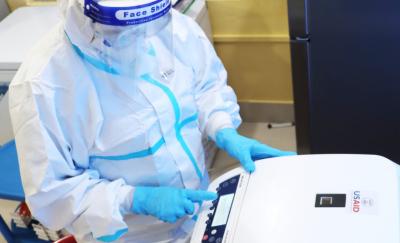Authors
Allyson P. Bear, Wendy L. Bennett, Joanne Katz, Kyu Han Lee, Atique Iqbal Chowdhury, Sanwarul Bari, Shams El Arifeen, Emily S. Gurley
The prevalence of diabetes and hypertension is rapidly increasing in low- and middle-income countries—with South Asia accounting for 60% of global diabetes burden and 23% of global hypertension burden—posing a significant challenge to healthcare systems. These conditions substantially increase risks of maternal, fetal, and newborn mortality in underdeveloped health systems. This cross-sectional study aims to assess the self-reported prevalence of diabetes and hypertension screening and diagnoses among recently pregnant women in rural Bangladesh, as well as the antenatal care received by women with these conditions.
Key Findings:
- Among the 4,692 respondents, 97% reported being screened for hypertension, with 10% receiving a diagnosis. Specifically, women aged 30-39 or in the top wealth quintile were more likely to be diagnosed with hypertension.
- Women aged 30–39 were almost three times more likely to be diagnosed with hypertension than those under 20 years old, and eight times more likely to be diagnosed with diabetes.
- Women with any diabetes diagnosis were more likely to have four or more antenatal care contacts compared to women who were never diagnosed and were significantly more likely to report having blood tests and other interventions during antenatal care.
The burden of diabetes and hypertension is not limited to Bangladesh; it affects millions of women worldwide. The study highlights the need for focused efforts to improve compliance with antenatal care guidelines and ensure that women receive the recommended number of visits during pregnancy. Universal screening for diabetes at 24-28 weeks of pregnancy would improve awareness and management of these diseases among women in their childbearing years to decrease pregnancy-related complications and mortality rates in vulnerable populations.



